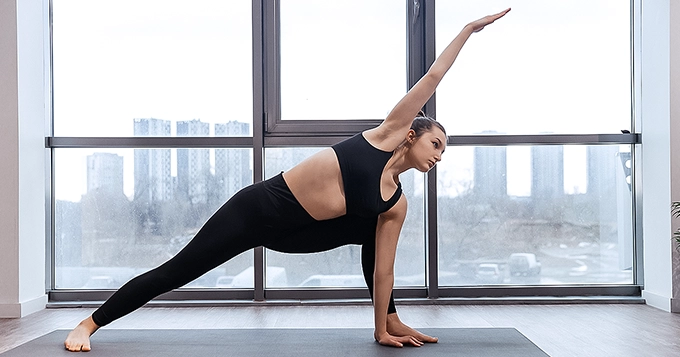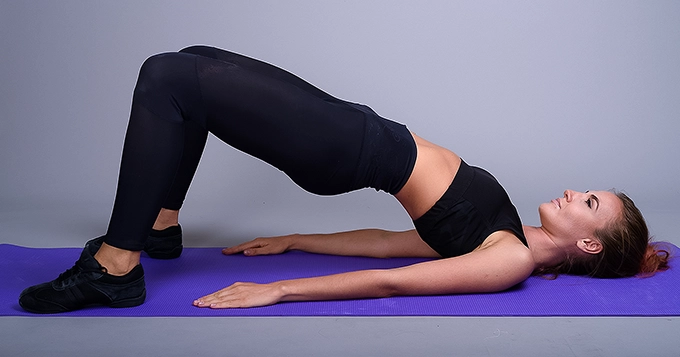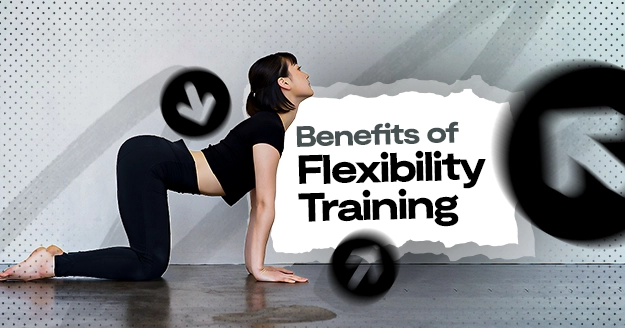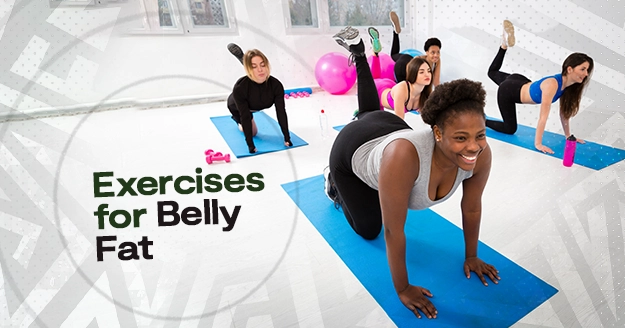Flexibility training is not only about being able to do the splits or touching your toes. It’s about enhancing your overall well-being and physical performance. Let’s delve into the comprehensive benefits of incorporating regular flexibility training into your fitness routine. But first, let’s discuss what flexibility training is.
Understanding Flexibility Training
Flexibility training refers to exercises and techniques aimed at improving your range of motion and elasticity of joints and muscles. It entails stretching muscles to increase their range of motion, which can result in greater overall functional movement, less chance of injury, and increased performance in physical activities.
Numerous stretching techniques, including proprioceptive neuromuscular facilitation (PNF) stretching, dynamic stretching, and static stretching, can be incorporated into a flexibility training program. Furthermore, flexibility exercises are frequently incorporated into practices like yoga and Pilates to support mental and physical health.
What are the Benefits of Flexibility?
- Improved Range of Motion
Regular training offers numerous benefits to flexibility, including improving your range of motion.
Flexibility training involves stretching exercises that target various muscle groups and joints. Over time, this helps to improve your range of motion, which also allows you to move more freely and perform daily tasks with greater ease. Whether it’s bending down to tie your shoes or reaching for items on a high shelf, increased flexibility makes these movements smoother and less restrictive.
- Injury Prevention
One of the most well-known benefits of flexibility training is reducing the risk of injury.
Tight muscles and limited range of motion can predispose you to injuries, particularly during physical activities or sports. By regularly engaging in flexibility exercises, you can reduce muscle imbalances, enhance joint stability, and mitigate the risk of strains, sprains, and other common injuries. Flexible muscles and tendons are more resilient and less prone to overstretching or tearing.
- Enhanced Posture
Poor posture is common in today’s sedentary lifestyle, often leading to discomfort and musculoskeletal problems. Flexibility training targets tight muscles that contribute to poor posture, such as those in the chest, shoulders, and hips. By stretching these muscles regularly, you can correct imbalances, lengthen tight structures, and promote better alignment of the spine, resulting in improved posture and reduced back pain.
- Reduced Muscle Tension and Stress
Stress and tension tend to accumulate in the muscles, leading to feelings of tightness and discomfort. Flexibility exercises, especially those involving deep stretching and relaxation techniques like yoga and tai chi, can help release built-up tension and promote relaxation. Stretching encourages blood flow to the muscles, alleviating soreness and promoting a sense of calm and well-being.
- Enhanced Athletic Performance
Also, flexibility benefits athletic performance across various sports and activities. Improved flexibility allows for greater joint mobility, better agility, and more efficient movement patterns. Athletes who incorporate flexibility training into their routines often experience enhanced speed, power, and coordination, translating to improved performance on the field, court, or track.
- Better Balance and Coordination
Flexibility training helps improve proprioception—the body’s awareness of its position in space—and coordination. By stretching muscles and joints through their full range of motion, you enhance proprioceptive feedback and refine your balance and coordination skills. This is particularly beneficial for older adults, as it reduces their risk of falls and improves overall stability.
- Relief from Muscular Discomfort
Muscular discomfort is a common complaint for many individuals, Whether from engaging in intense physical activity or sitting at a desk all day. Flexibility exercises can provide relief by releasing tension in tight muscles and promoting circulation to alleviate soreness and stiffness. Regular stretching can also help alleviate common issues like lower back pain, tight hips, and stiff neck and shoulders.
- Improves State of Mind
Doing postures that open up and stretch your body on a regular basis will help you feel relaxed. The physical advantages can enhance a calm mental state. When you feel better physically, you can find it easier to relax.
Example of Flexibility Training Exercises
- 90/90 Stretch
- Bridge Pose (Setu Bandha Sarvangasana)
- Cat Cow (Marjaryasana & Bitilasana)
- Crescent Lunge (Anjaneyasana)
- Cross-Over
- Extended Puppy Pose
- Figure Four Stretch
- Forward Lunges
- Frog Stretch
- Half Split Stretch
- Happy Baby (Ananda Balasana)
- Hip Abductors Stretch
- Kneeling Side Bend Stretch
- Knees to Chest
- Lunging Hip Flexor Stretch
- Lying Pectoral Stretch
- Lying Quad Stretch
- Piriformis Stretch
- Pretzel Stretch
- Pyramid Pose (Parsvottanasana)
- Reclined Pigeon (Supta Kapotasana)
- Reclined Spinal Twist
- Seat Straddle Lotus
- Seated Shoulder Squeeze
- Sphinx Pose
- Standing Quad Stretch
- Supine Twist (Jathara Parivartanasana)
- Toes on Wall Calf Stretch
- Triangle Pose (Trikonasana)
- Triceps Stretch
- Wide-Leg Forward Fold (Prasarita Padottanasana)
Incorporating Flexibility Training into Your Routine:
Incorporating flexibility training into your routine improves overall mobility and prevents injuries. Here are some steps to help you integrate flexibility training into your workout routine effectively:
- Start Slowly
If you’ve never trained your flexibility, start with simple stretches. Over time, progressively increase the length and intensity of your stretches.
- Warm-Up First
Before starting flexibility exercises, perform a brief warm-up to increase blood flow to your muscles, preparing them for stretching. This can help you avoid injury. Warm-up activities can include light cardio activities like jogging lightly, brisk strolls, jumping jacks, or cycling for 5-10 minutes.
- Static Stretching
This involves holding a stable stretch position for 15–30 seconds. Focus on targeting major muscle groups, including the hamstrings, quadriceps, calves, chest, shoulders, and back.
- Dynamic Stretching
Dynamic stretches require you to move while you stretch. Leg swings, arm circles, and hip rotations are a few examples. They work wonders for warming up.
- Yoga, Pilates, or Tai Chi
Consider exploring activities like yoga, Pilates, or tai chi, which not only improve flexibility and balance but also promote relaxation and mindfulness. These mind-body practices offer a holistic approach to your fitness, benefiting both your body and mind.
- Proper Form and Breathing
Hold each stretch for around 15 to 30 seconds without bouncing or forcing the movement when performing static stretches.
As you stretch, be mindful of your breathing. You can increase the effectiveness of a stretch by relaxing into it with deep, calm breaths – gently easing into the stretch without bouncing or forcing the movement.
- Listen to Your Body
Pay attention to your body’s signals during stretching exercises. Never push yourself to the limit or force a stretch. Stretch to the point of tension and avoid overstretching or pushing yourself too far, which can lead to injury.
- Consistency
Schedule regular time for stretching. Dedicate specific time slots in your workout schedule for flexibility training. Aim for at least 10-15 minutes of stretching after each workout session or on rest days.
Consistency is the key when it comes to flexibility training. With time and dedication, you’ll not only enhance your flexibility but also unlock a myriad of physical and mental benefits that will enrich your overall quality of life.
- Cool Down
After completing flexibility exercises, finish your routine with a brief cooldown period with mild, static stretches to gradually bring your heart rate down and promote relaxation.
- Monitor Progress
Keep track of your flexibility improvements over time by regularly assessing your range of motion and flexibility in various muscle groups. Adjust your stretching routine as needed to address areas of weakness or imbalance.









